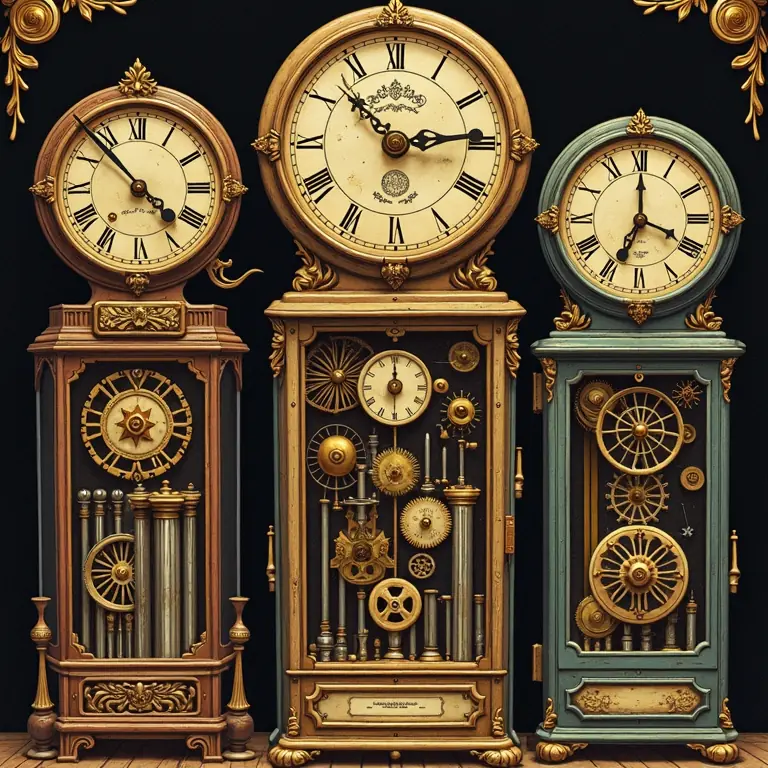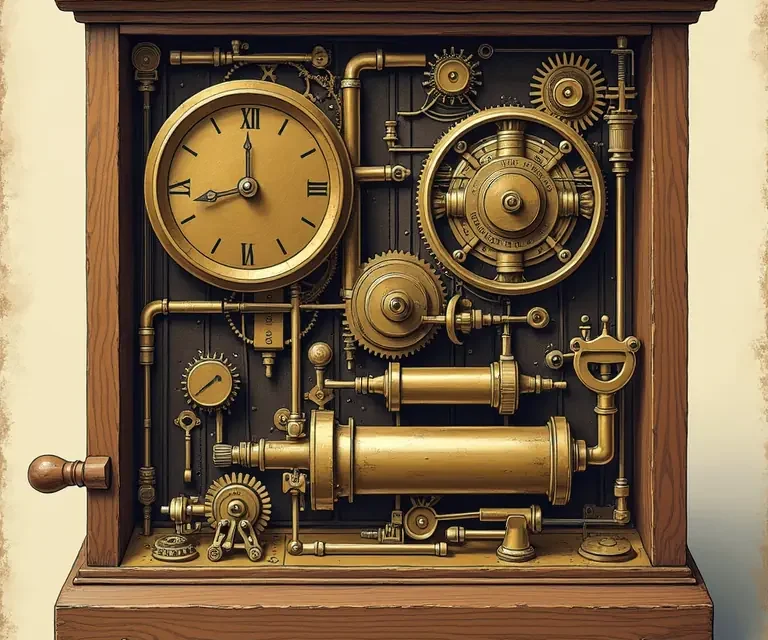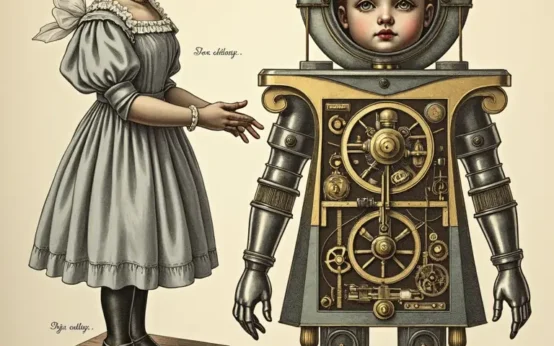The delicate chimes of a music box evoke nostalgia, romance, and a bygone era. But beyond the aesthetic appeal lies a fascinating world of precision engineering, consistent scientific principles, and surprisingly complex mechanics. Antique clockwork music boxes, dating from the 18th century to the early 20th, weren’t just beautiful objects; they were miniature marvels of automated music production. This article will delve into the science behind these enchanting devices, exploring the physics of their movement, the mathematics of their melodies, and the consistent principles that governed their construction for over a century.
A History of Automated Music
While the concept of automated musical instruments dates back to ancient civilizations – think of hydraulically powered organs and complex automata – the modern music box as we recognize it emerged in Switzerland in the 18th century. Initially, these were large, elaborate pieces crafted for the wealthy. The earliest examples often utilized pinned cylinders activating levers to strike tuned bells. As technology advanced, particularly in precision metalworking, music boxes became smaller, more affordable, and more sophisticated. The key innovation was the interchangeable cylinder and the comb-like arrangement of steel teeth, allowing for a wider range of melodies and easier maintenance.
The Core Components: A Mechanical Breakdown
At the heart of every clockwork music box are several key components working in harmonious coordination:
- The Cylinder: This is the ‘memory’ of the music box. A metal cylinder, typically made of brass, is covered in tiny pins arranged in a specific pattern. The placement of these pins dictates the notes played. The cylinder rotates at a consistent speed, controlled by the mainspring and regulator.
- The Comb (or Tooth Bar): A row of precisely tuned steel teeth, the comb is the ‘voice’ of the music box. As the cylinder rotates, the pins pluck the teeth, causing them to vibrate and produce sound. The length and thickness of each tooth are carefully calculated to produce a specific pitch.
- The Mainspring: The power source of the music box. A tightly coiled spring stores potential energy, which is gradually released to drive the mechanism.
- The Gear Train: A series of interconnected gears that transfer power from the mainspring to the cylinder and regulator, controlling their speed and synchronization. The gear ratios are crucial for maintaining a consistent tempo.
- The Regulator: A device that controls the speed of the cylinder’s rotation. It acts as a ‘governor’, preventing the mechanism from running too fast or too slow.
These components, while seemingly simple, represent a masterful application of mechanical principles.
The Physics of Movement: Gears, Torque, and Tempo
The consistent operation of a music box relies heavily on the principles of rotational motion and torque. The mainspring provides the torque – a rotational force – that drives the gear train. Each gear in the train has a different number of teeth, resulting in changes in speed and torque. This is governed by the gear ratio: the number of teeth on the driven gear divided by the number of teeth on the driving gear.
For example, a gear ratio of 2:1 means that for every one rotation of the driving gear, the driven gear rotates twice. This allows for a precise control over the cylinder’s speed. The regulator plays a vital role in maintaining a constant tempo. Typically, it consists of a rotating fan or a weighted arm that experiences increasing resistance as the speed increases. This resistance acts as a brake, ensuring a stable rotational speed, regardless of the mainspring’s energy level. Understanding these principles allows us to appreciate the consistency in tempo across different music boxes, even those made decades apart.
The Mathematics of Melody: Cylinder Pin Placement and Frequency
The melody played by a music box isn’t arbitrary; it’s a direct result of carefully calculated pin placements on the cylinder. Each pin corresponds to a specific note, and the order in which they appear determines the sequence of the melody. The relationship between the pin’s position and the note it produces is based on the physics of sound – specifically, frequency and wavelength.

Each tooth on the comb is tuned to a specific frequency, corresponding to a particular musical note. When a pin plucks a tooth, it sets it vibrating at that frequency, producing the corresponding sound. The cylinder’s circumference dictates the number of notes that can be accommodated in a single rotation. More complex melodies require longer cylinders or multiple rows of pins. The placement of pins isn’t merely about selecting notes; it’s about timing and duration. The spacing between pins determines the length of each note. A closer spacing results in shorter notes, while a wider spacing produces longer notes. Creating a music box cylinder is, in essence, a translation of musical notation into a physical, mechanical code.
Material Science and Precision Engineering
The consistent quality and longevity of antique music boxes are also attributable to the materials used and the precision of their manufacturing. Brass was the preferred material for cylinders due to its durability, ease of machining, and acoustic properties. Steel was used for the comb teeth because of its ability to be precisely tuned and its resilience. The manufacturing process required skilled craftsmen with specialized tools. Pinning the cylinders was a painstaking task, often done by hand using precision templates. The comb teeth were meticulously filed and tuned to ensure accurate pitch. Even the smallest imperfections could affect the sound quality. The level of precision achieved in the 19th and early 20th centuries is remarkable, especially considering the limitations of the technology available at the time.
Variations and Innovations
While the basic principles remained consistent, music boxes evolved over time. Several innovations were introduced to enhance their capabilities:
- Multiple Cylinders: Some music boxes featured interchangeable cylinders, allowing users to select from a variety of melodies.
- Automated Cylinder Changes: More elaborate models incorporated mechanisms to automatically change cylinders, enabling a continuous stream of music.
- Dampers: Dampers were added to muffle the sound of teeth that weren’t being plucked, improving the clarity of the melody.
- Harmonic Accompanyment: Some music boxes incorporated additional combs and resonators to create richer harmonic textures.
- Polyphonic Music Boxes: The most sophisticated music boxes were polyphonic, meaning they could play multiple notes simultaneously, creating a fuller, more complex sound. This was achieved using multiple rows of pins and combs.
Restoration and Preservation: Maintaining Melodic Memory
Preserving these mechanical marvels requires specialized knowledge and skill. Restoration often involves cleaning, lubricating, and repairing damaged components. The comb teeth, in particular, are prone to wear and require careful re-tuning. Replacing a cylinder is a complex undertaking, as it requires recreating the original pin pattern accurately. The goal of restoration is not to make the music box look new, but to return it to its original working condition while preserving its historical integrity.
The Enduring Appeal: A Legacy of Ingenuity
The consistent science behind antique clockwork music boxes is a testament to the ingenuity and craftsmanship of their creators. They represent a fascinating intersection of physics, mathematics, and art. Their enduring appeal lies not only in their beautiful melodies but also in the intricate mechanical ballet that brings those melodies to life. These devices offer a tangible connection to the past, reminding us of a time when innovation and artistry went hand in hand.
Interested in other examples of consistent principles in seemingly simple technologies? Explore the physics of yo-yo tricks, or delve into the geometry of origami. The consistent application of scientific principles is a common thread throughout history.
Further Exploration
The precision inherent in these devices extends to other antique technologies. Consider the logic of antique tool markings or the mechanics of vintage typewriters. Even something as seemingly simple as handwriting reveals consistent scientific underpinnings, as explored in the science of penmanship styles.


 The Curious Anatomy of Antique Automata: Gears, Glamour, and Lost Ingenuity
The Curious Anatomy of Antique Automata: Gears, Glamour, and Lost Ingenuity